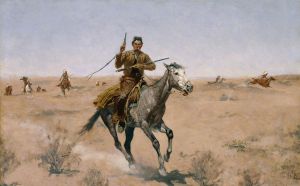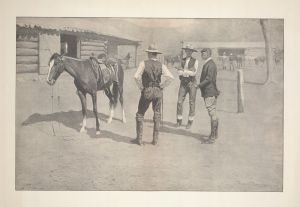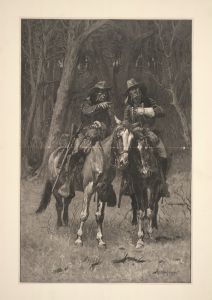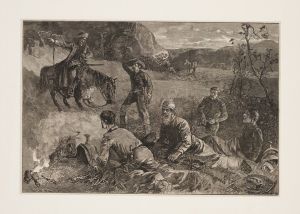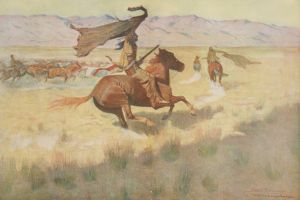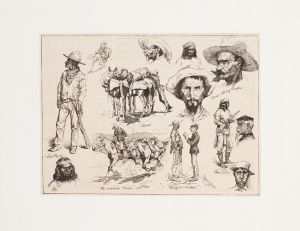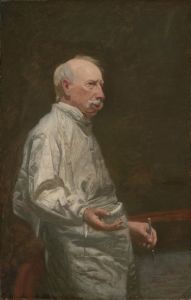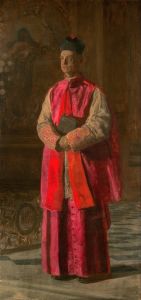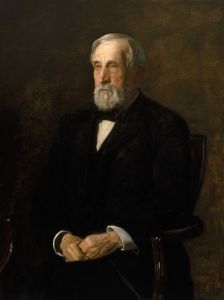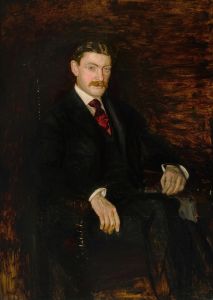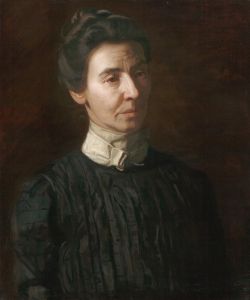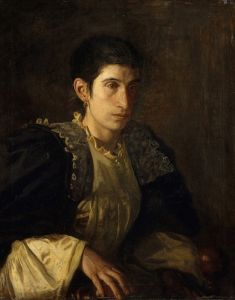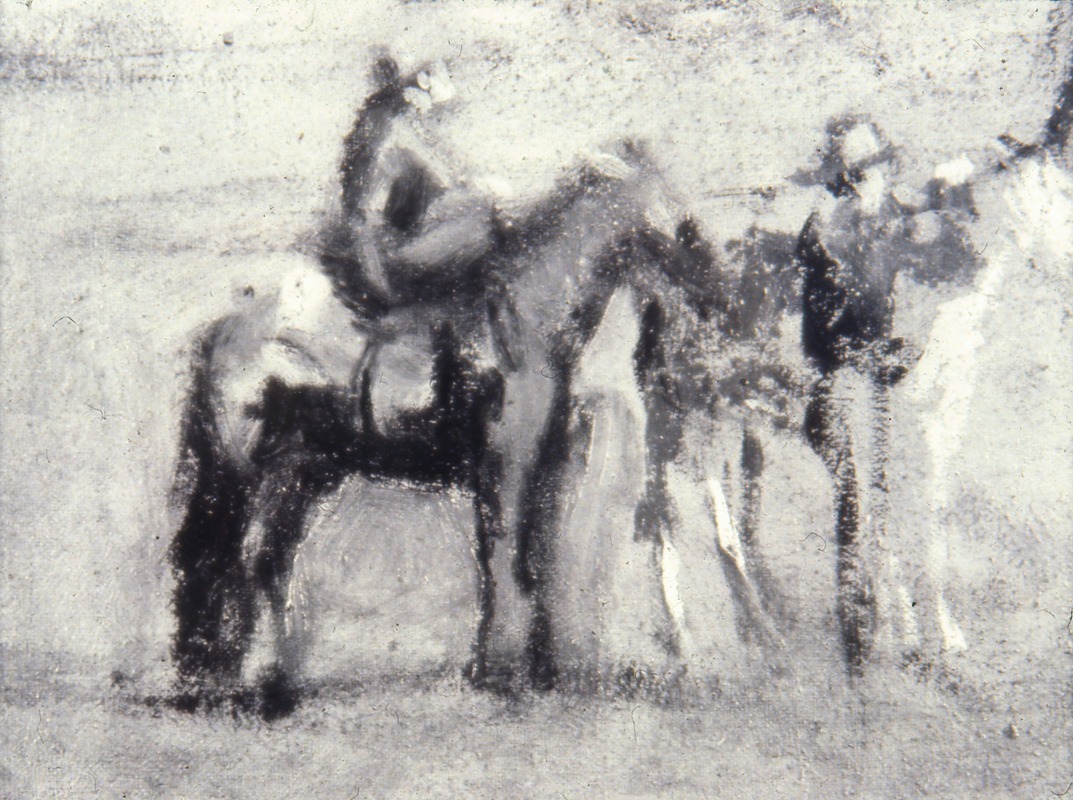
Study for ‘Cowboys in the Badlands’
A hand-painted replica of Thomas Eakins’s masterpiece Study for ‘Cowboys in the Badlands’, meticulously crafted by professional artists to capture the true essence of the original. Each piece is created with museum-quality canvas and rare mineral pigments, carefully painted by experienced artists with delicate brushstrokes and rich, layered colors to perfectly recreate the texture of the original artwork. Unlike machine-printed reproductions, this hand-painted version brings the painting to life, infused with the artist’s emotions and skill in every stroke. Whether for personal collection or home decoration, it instantly elevates the artistic atmosphere of any space.
"Study for ‘Cowboys in the Badlands’" is a painting by the American artist Thomas Eakins, created in 1888. Eakins is renowned for his realistic portrayal of the human figure and his keen interest in capturing the essence of American life. This particular work is a study for a larger painting, "Cowboys in the Badlands," which reflects Eakins' fascination with the American West and its iconic imagery.
Thomas Eakins was born in Philadelphia in 1844 and became one of the most significant American artists of the 19th century. He was known for his dedication to realism and his innovative approach to art, often incorporating photography into his studies to achieve greater accuracy in his depictions. Eakins' work frequently focused on the human body, sports, and outdoor scenes, reflecting his interest in anatomy and movement.
"Study for ‘Cowboys in the Badlands’" was created during a period when Eakins was exploring themes related to the American frontier. The painting depicts cowboys on horseback navigating the rugged terrain of the Badlands, a region known for its dramatic landscapes and challenging environment. This study captures the dynamic movement of the horses and riders, showcasing Eakins' skill in rendering motion and his attention to anatomical detail.
The Badlands, located primarily in South Dakota, were a popular subject for artists and photographers in the late 19th century, symbolizing the untamed spirit of the American West. Eakins' choice to depict cowboys in this setting reflects a broader cultural fascination with the frontier during this period. The cowboys, often seen as emblematic of independence and adventure, were a fitting subject for Eakins' exploration of American identity.
Eakins' approach to this study involved careful observation and a commitment to authenticity. He was known to have used photographs as references, a practice that was somewhat controversial at the time but allowed him to achieve a high degree of realism. This method enabled Eakins to capture the intricate details of the horses' musculature and the cowboys' attire, lending a sense of immediacy and life to the scene.
The study serves as a preparatory work for the larger painting, which further develops the themes and composition explored in this piece. While the study itself is a complete work, it provides insight into Eakins' creative process and his methodical approach to painting. By examining this study, viewers can gain an understanding of how Eakins constructed his larger compositions and the care he took in planning each element of his paintings.
Thomas Eakins' "Study for ‘Cowboys in the Badlands’" is a testament to his skill as a realist painter and his interest in capturing the spirit of American life. Through this work, Eakins contributes to the rich tradition of Western art, offering a glimpse into the rugged beauty of the Badlands and the enduring allure of the cowboy as an American icon. The painting remains an important example of Eakins' dedication to realism and his ability to convey the vitality of his subjects.






